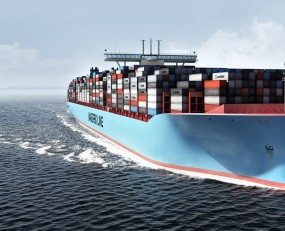
Over the past couple of weeks, Maersk’s APM Terminals (APMT) has experienced a mixture of success and disappointment in developing its business.
The latest news is that APMT has been awarded the contract for constructing and operating a new terminal at the Port of Suape in Pernambuco, Brazil. The company bid US$88m for a site suitable to build a new container terminal, winning over its rival, International Container Terminal Services.
APM Terminals said that it plans to build a 400,000 TEU facility, adding “55% more capacity in the port complex”. The terminal is intended to be finished “within 24 months” and fully operational “by the end of 2025, when dredging of the access channel and turning basin is also expected to be concluded by Suape Port” Developing the terminal is expected to cost APM Terminals R$2.6bn (US$500m). The port of Suape is currently the 8th largest in Brazil.
This success follows discussions between the Suez Canal Authority and APM. The former has elaborated on its plans to partner with APMT to further the development of the Suez Canal Container Terminal, a large facility located in East Port Said.
Admiral Osama Rabie, Chairman of the Suez Canal Authority, and the CEO of APM Terminals met to review their joint venture last week, discussing their plans to “transform it into a global hub for container handling in the eastern and southern Mediterranean region, where the group intends to invest US$500 million, by operating a new 1,000-meter container quay adjacent to the existing 500-meter one, with an increase in the number of cranes to 30”.
Less good news for APMT is that they seem to have lost the competition for the new container terminal at the port of Chittagong, which has seen rapid growth over the past ten years and needs new capacity.
A press release from the Saudi company Red Sea Gateway Terminal has asserted that it has “been selected by Bangladeshi Ministry of Shipping as the preferred operator of the 500,000 TEU annual throughput capacity facility now under construction at the busiest container port on the Bay of Bengal”.
This facility, known as the ‘New Patenga Container Terminal’, has been the focus of vigorous competition over the award of the contract for operations and development of the location, which currently operates as a dock for geared vessels but needs to be expanded into a large container terminal. APM had to compete with Red Sea Gate Terminal, DP World and Adani Ports.
Source: Transport Intelligence, 23rd of August 2022
Author: Thomas Cullen